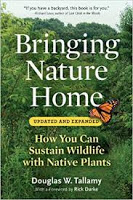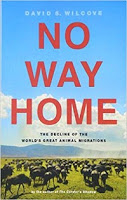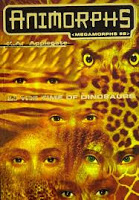Conservation, De-Exctinction and the Precarious Future of Wild Things
by M.R. O\’Connor
When I first picked up this book browsing at the library, I assumed by its title the subject matter was extinct animals scientists hope to one day revive: I\’ve read before about ideas on resurrecting the woolly mammoth, for example. This book is much broader in scope and full of detail I didn\’t expect. It\’s about how complicated issues have grown around saving wildlife as human populations eat up space and climate change affects everything. It\’s about the real difficulties surrounding attempts to define what value a species has, what measure should be taken to save them, how well it works, etc.
Each chapter has a different focus: spray toads in an isolated waterfall gorge that were threatened by a dam to provide electricity for impoverished Tanzanians. Florida panthers reduced to such a small population they have become inbred. White Sands Pupfish that exist in tiny pools on a missile range. The giant enigma of northern right whales- nobody knows where they spend half their lives, the puzzle of why their reproduction rate is so low. The Hawaiian crow is extinct in the wild- attempts are now being made to release captive-bred birds back into their native forests. Passenger pigeons- why did they really disappear? is it possible to bring them back? would people want to (they were a terrible scourge for colonial farmers). Last of all – Neanderthals. Who according to this book, weren\’t the unintelligent \’caveman\’ brutes popular culture likes to portray- but highly intelligent in their own right, well-adapted to their environment.
All of these were full of information totally new to me. I had never heard of spray toads before. I didn\’t realize that Florida panthers used to interbreed with Texas cougars (a long time ago)- so scientists attempted bring in some Texan cougars to diversify the gene pool. But when the panthers started breeding, there was no space for the population to expand. Nowhere for them to live. Honestly, it was so dismaying I didn\’t read the book for a few days- then got online and looked stuff up. Some failed developments have been turned back into wild land for the panthers. The spray toad still lives- supported by artificial misting systems. I have to remind myself this book is a few years old! But some things in it are still hard to understand. The vast storage systems of frozen animal tissue samples- in case they can one day be re-generated. The methods gone beyond stem cells. The genome sequencing. Insights this gives us into things like when did the right whale population become so small (it was before humans hunted them apparently) and how closely related are passenger pigeons to band-tailed pigeons. I didn\’t know there were so many people passionate about bringing passenger pigeons back. I was even more surprised to read that some scientists think to bring back to life the Neanderthal- wow that is full of some strong implications. The end of the book got a bit philosophical and it was difficult to keep focus on the last few pages. Overall it was full of way more complex issues than I can describe, lots to think about.
Oh, there\’s also a chapter about the Northern white rhino. It was the same story as in The Last Rhinos but with slightly different details which made that a very interesting read.
Borrowed from the public library.
Rating: 4/5 266 pages, 2015






